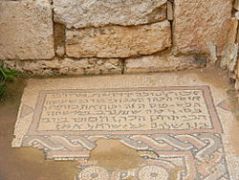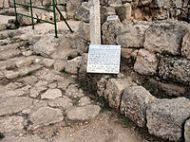 The Gilad
The Gilad
The book of Bamidbar (Numbers) leaves us with two open questions regarding the tribe of Menashe.
1. In the first census (2:35) the number 32200 is given, while the second census, 40 years later (26:35), gives the number 52700. This large increase occurred in spite of the fact that the number of Israelites as a whole slightly decreased in the aforementioned period (603,550 to 601,730).
2. The tribes of Reuben and Gad alone approached Moses with the request to remain of the East Bank of the Jordan. After their request was granted conditionally and they began to build their cities, (Chapter 32) Menashe then enters the picture, with the story of how Menashe’s own grandchildren conquered the Gilad. When did this conquest take place, and why did the half of the tribe that remained on the East Bank go unmentioned in the beginning of the narrative?
Some of the earlier commentators (Peirush Kadmon al Divrei Hayamin; Rabbi Yehudah Hachasid al Hatorah) claim that Joseph’s descendants were permitted by the Egyptians to return to their holdings in the East. Religious Zionist commentators (R’ Yehudah Kil in the Daat Mikrah series, R’ Yoel bin Nun and R’ Yaakov Medan) took this idea as the key to our story. They claim that half of Menashe left Egypt quite early, and were disconnected from the rest of the Israelites until the battles in the 40th year of desert sojourn.
The idea that the Egyptians sent their Josephene allies (this may have occured before the enslavement of the Israelites) over to the Gilad makes sense, as this would provide a buffer between the “King’s Road” and Egypt-controlled Canaan.
I spoke to Rav Medan after he published this in Makor Rishon two years ago, and he expected a major backlash from circles (within the Religious Zionist community) that would find such an approach unacceptable. Not only did this not really occur, but the Haredi Mishpacha (Hebrew, 14 Nissan 5772) published an article along the same lines (giving full credit in the footnotes to the above mentioned sources).
The idea that a mainstream Haredi publication is willing to write that not all Israelites left Egypt, nor were they present at Mount Sinai, is not something that should go unnoticed, and raises questions of how Tanach will be studied and understood in Haredi circles in the future.
I hope to post sources as soon as I get my hands on them.

 One of Susya’s many Mikvaot
One of Susya’s many Mikvaot